Сanon standard zoom lenses for any budget and purpose.
Do you want the photos taken with your Canon to look attractive and professional? Then a standard zoom lens should be a must-have item in your kit. It will provide you with faster apertures, longer reach and high-speed focusing.
After the releases of new mirrorless cameras with an innovative RF mount, buying the right Canon lens can be a bit confusing. Below, you will see a description of the most worthy options on the market today. These lenses are of excellent quality and you will surely find the right one for you.
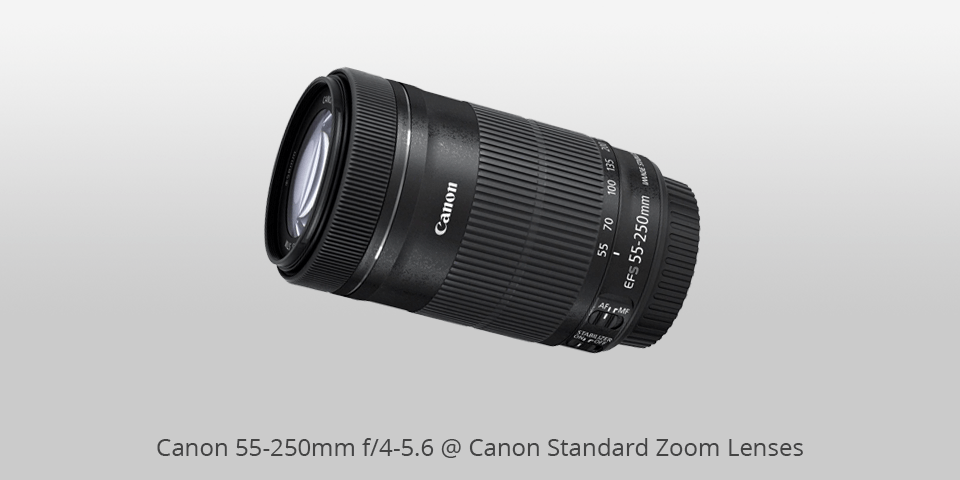
Mount: Canon EF-S | Diaphragm blades: 7, Rounded | Autofocus: Yes | Min focus distance: 85 cm | Max magnification: 0.29x | Filter size: 58 mm (Front) | Dimensions (øxL): 70 x 111.2 mm | Weight: 375 g
⊕ Amazing sharpness
⊕ Speedy focusing
⊕ Powerful stabilizer
⊕ Affordable
⊖ Lens mount is made of plastic
Although this option falls into the category of inexpensive Canon standard zoom lenses, it provides excellent images. The lens has stunning sharpness in the center across almost the entire zoom. As a rule, you can see such results with more expensive optics.
Thanks to optical image stabilization, the camera shake by up to 3.5 shutter speed steps is minimal. This feature helps you capture high-quality images in low-light conditions and with larger magnifications.
This lens has fast, smooth and near-silent autofocus thanks to the STM stepping focus motor that makes it a great option for video shooting. This is one of the best standard Canon camera lenses for weekend photography and also for those who are not chasing a lens for shooting fast telephoto action in dim lighting conditions.
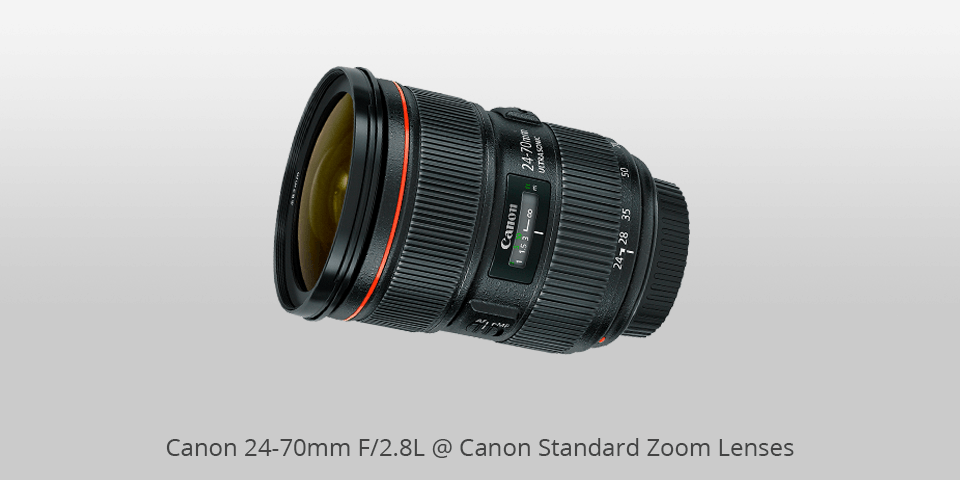
Mount: Canon EF | Diaphragm blades: 9, Rounded | Autofocus: Yes | Min focus distance: 38 cm | Max magnification: 0.21x | Filter size: 82 mm (Front) | Dimensions (øxL): 88.5 x 113 mm | Weight: 805 g
⊕ Stunning optics almost without drawbacks
⊕ Amazing flare resistance
⊕ Speedy, noiseless and accurate AF system
⊕ Weather protection
⊖ Lack of image stabilization
⊖ A hefty price
The combination of beautiful bokeh and incredible sharpness, even at a widely open aperture, is the hallmark of this Canon fixed zoom lens. It has a fast CPU, ring USM and image optimized AF algorithms for speedy autofocusing. Besides, the lens has a fluorine coating on front and rear surfaces to prevent smears and fingerprints.
Optimized lens coatings provide minimal ghosting and great color balance. Thanks to the use of 2 UD lens elements and 1 Super UD lens element, chromatic aberration is reduced almost to zero. Moreover, you get contrast, high-res images due to minimized color blurring around the edges of the subject. Spherical aberration is reduced by 2 types of aspherical lenses.
This allows for great photos throughout the full zoom range and across the whole screen area. You can safely transport it as the zoom lock lever secures the zoom position at the wide end.
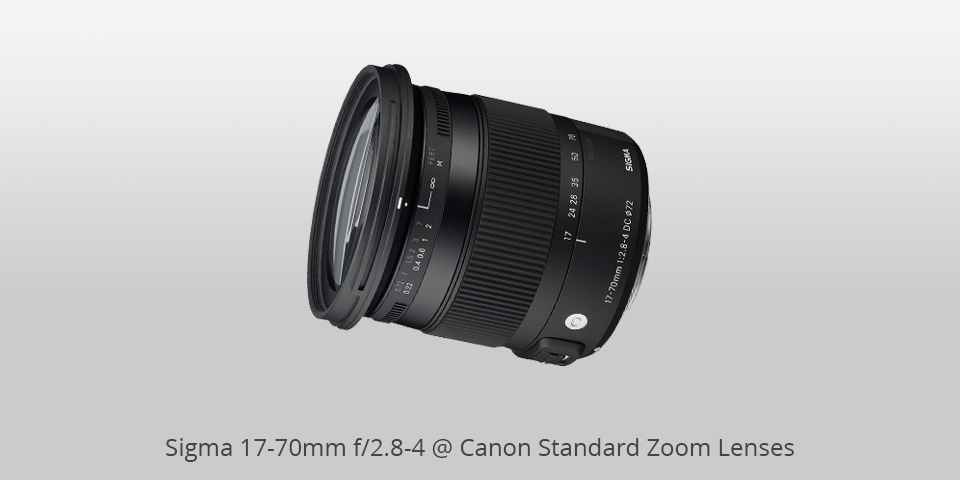
Mount: Canon EF | Diaphragm blades: 7, Rounded | Autofocus: Yes | Min focus distance: 22 cm | Max magnification: 0.36x | Filter size: 72 mm (Front) | Dimensions (øxL): 79 x 82 mm | Weight: 465 g
⊕ Convenient locking mechanism
⊕ Fairly good build quality
⊕ Surprisingly sharp for a superzoom
⊕ Great focusing speed
⊖ Quite mediocre bokeh
This Sigma product will delight its owners until they realize that they have grown out of this lens. It is definitely aimed at travel enthusiasts and aspiring photographers. To summarize, I can say that compared to its predecessor, the Sigma AF 17-70 mm f/2.8-4 provides increased performance in terms of sharpness and can be used as a standard Canon lens.
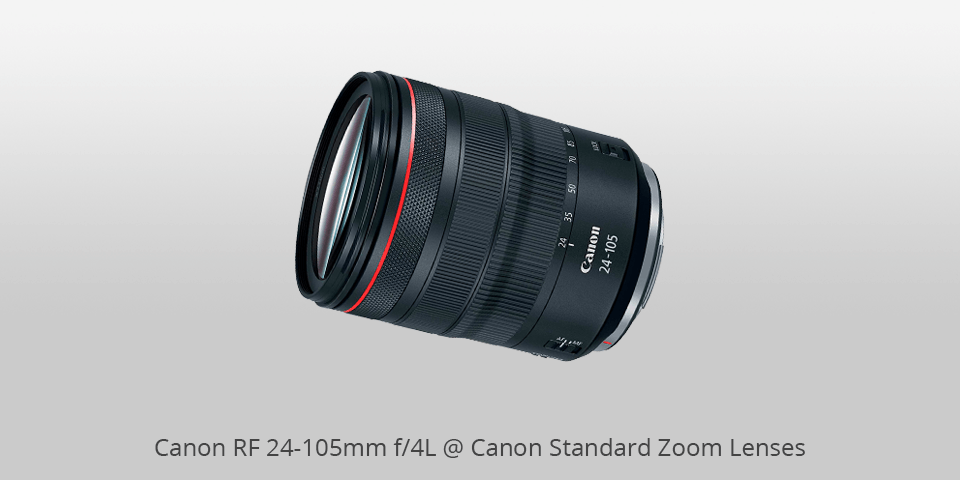
Mount: Canon RF | Diaphragm blades: 9, Rounded | Autofocus: Yes | Min focus distance: 45 cm | Max magnification: 0.24x | Filter size: 77 mm (Front) | Dimensions (øxL): 83.5 x 107.3 mm | Weight: 700 g
⊕ Quick focusing
⊕ Awesome image stabilization
⊕ Reliable weather sealing
⊕ Pretty portable
⊖ It could be 24-120mm
⊖ No lens lock option
This universal lens is suitable for a wide variety of shooting scenes. Its zoom range includes normal, wide-angle and telephoto. You can easily select the mode you want by turning a zoom ring.
This fast zoom lens for Canon contains 1 UD lens element and 3 aspherical elements to eliminate distortion, aberration and astigmatism. As a result, the camera delivers you detailed, dynamic, sharp images with high contrast throughout the zoom range. With a 9-blade circular aperture, you get soft, eye-pleasing backgrounds.
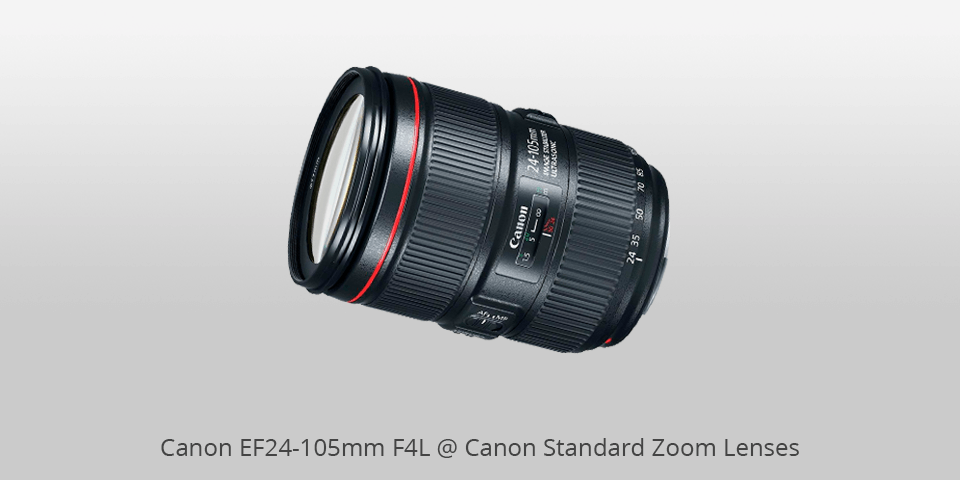
Mount: Canon EF | Diaphragm blades: 10, Rounded | Autofocus: Yes | Min focus distance: 45 cm | Max magnification: 0.24x | Filter size: 77 mm (Front) | Dimensions (øxL): 83.5 x 118 mm | Weight: 795 g
⊕ High resolution in the center and edges
⊕ Focuses quickly in low light
⊕ High constant aperture
⊕ Great four-stop IS system
⊖ Chromatic aberration at the edge of the frame
High build quality and stunning optical performance are the main advantages of this professional lens. All in all, this Canon lens has almost no downsides. Of course, like any zoom, it has a slight decrease in image quality at the longest focal lengths.
Though the aperture is only f/4, in some cases, it is fully compensated by the presence of a stabilizer. Besides, the lens weighs almost 800g. This is a very balanced universal Canon standard zoom lens that is suitable for a very wide range of tasks.
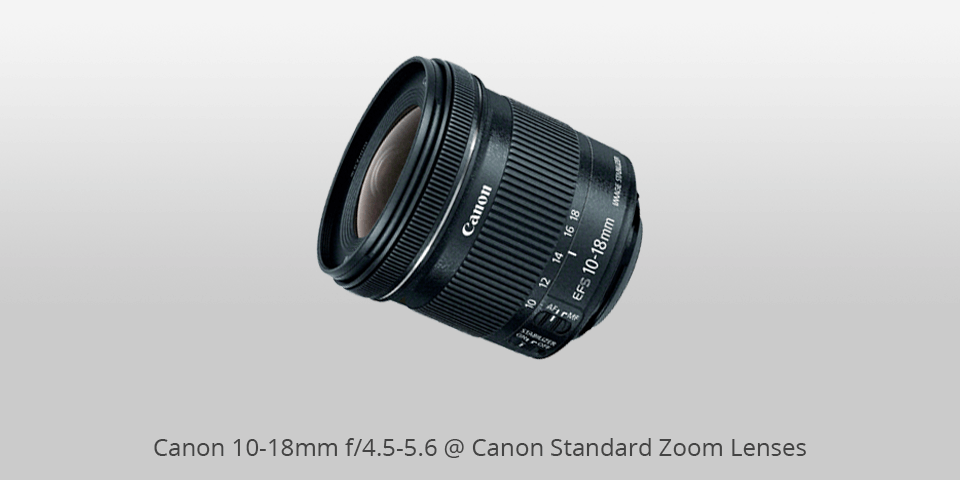
Mount: Canon EF-S | Diaphragm blades: 7, Rounded | Autofocus: Yes | Min focus distance: 22 cm | Max magnification: 0.15x | Filter size: 67 mm (Front) | Dimensions (øxL): 74.6 x 72 mm | Weight: 240 g
⊕ Fantastic sharpness
⊕ Extremely wide-angle field of view
⊕ Includes STM focus motor
⊕ Good value for the money
⊖ Lack of a standard hood
With this lens, you get incredible optical performance at a very affordable price. Undoubtedly, this is one of the best options with a price tag under $300. Low CA, minimal distortion and fantastic sharpness are the strengths of this standard Canon lens.
This option is suitable for those who do not need a quick max aperture for their super-wide-angle pictures taken with APS-C Canon DSLR. It does a great job with ordinary photography tasks and won’t ruin your budget.
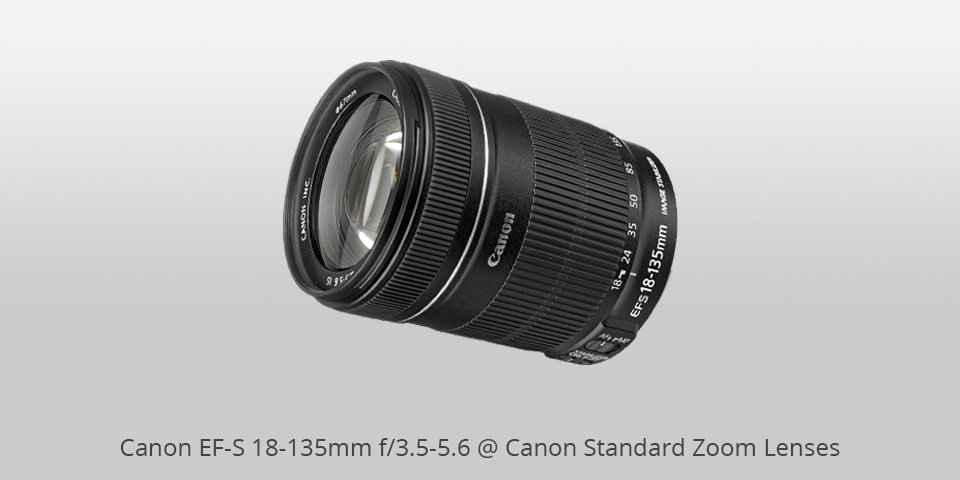
Mount: Canon EF-S | Diaphragm blades: 7, Rounded | Autofocus: Yes | Min focus distance: 39 cm | Max magnification: 0.28x | Filter size: 67 mm (Front) | Dimensions (øxL): 77.4 x 96 mm | Weight: 515 g
⊕ Noiseless and fast autofocus
⊕ Well corrected for CA
⊕ Powerful IS
⊕ Great Zoom Adapter for video
⊖ Poor sharpness at the long end
⊖ Lack of lens hood
Unlike Canon standard zoom lenses, this model lacks some features. However, its medium and wide apertures deliver crisp and bright images. The performance at smaller apertures and longer lengths is rather poor. This lens is a good option for traveling photographers. Besides, many videographers like this Canon optics for the Power Zoom Adapter.
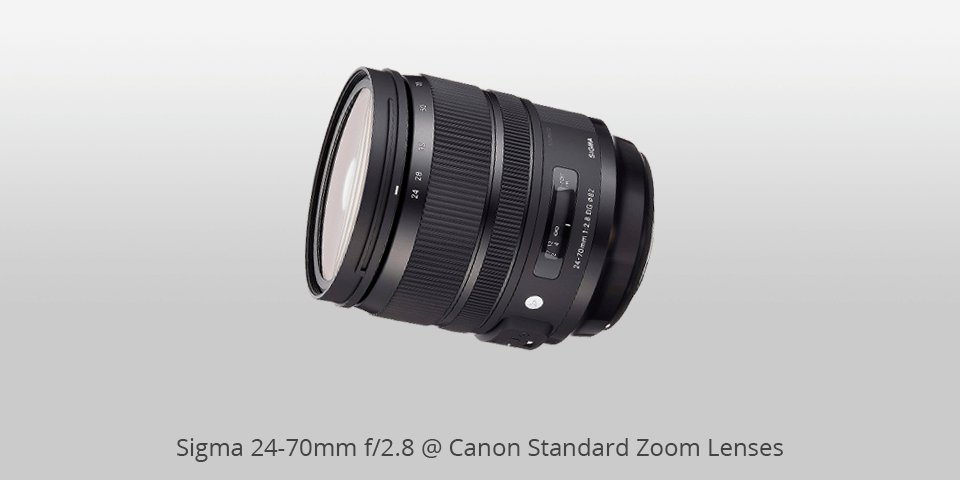
Mount: Canon EF | Diaphragm blades: 9, Rounded | Autofocus: Yes | Min focus distance: 37 cm | Max magnification: 0.21x | Filter size: 82 mm (Front) | Dimensions (øxL): 88 x 107.6 mm | Weight: 1020 g
⊕ Hood is included
⊕ Quick and bright at the wide end
⊕ Constant f2.8 aperture
⊕ Has a full-frame sensor
⊖ When focusing, the lens extends
This product from Sigma also deserves some compliments. Reliable performance, excellent picture quality, efficient weather sealing, decent focusing abilities and compactness are the upsides of this constant aperture zoom lens. The images look incredibly sharp. Besides, this lens produces beautiful bokeh. Overall, this is a reliable, weatherproof optics with decent performance.
| Image | Name | Features | |
|---|---|---|---|
 |
Canon 55-250mm f/4-5.6
Our choice |
CHECK PRICE → | |
 |
Canon 10-18mm f/4.5-5.6
Budget |
CHECK PRICE → | |
 |
Canon 24-70mm F/2.8L
Professional |
CHECK PRICE → |
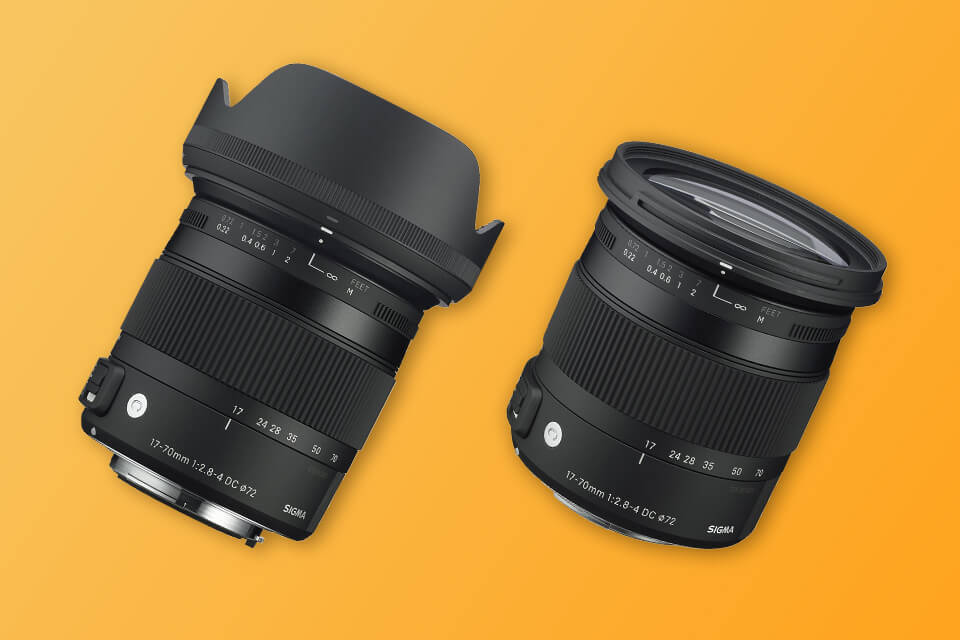
Focal distance is one of the main factors you should consider when choosing Canon standard zoom lenses. This term refers to the range your lens can cover. The presence of a telephoto lens in your kit or plans to buy one may influence the decision to get standard zoom optics. If you have a telephoto lens from 70mm, then buying a standard zoom to 105mm is optional. Your telephoto lens can cover this distance.
This is another important feature to keep in mind. In this review, you will find standard Canon camera lenses with f/2.8 and f/4 apertures. Of course, f/2.8 optics is better, but it costs more. However, an f/4 is a good choice for capturing landscapes.
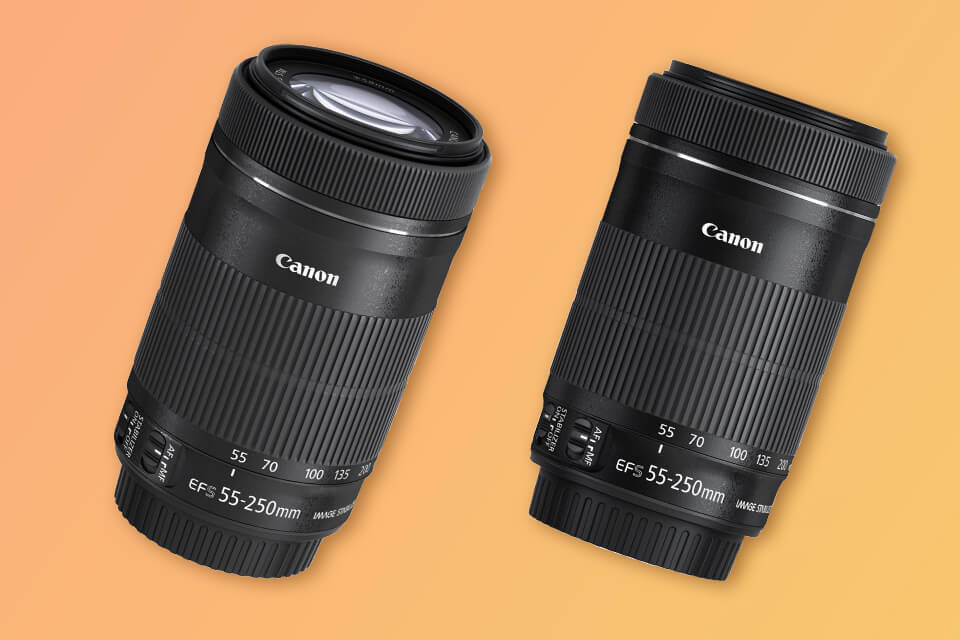
If you want sharp images even at low shutter speeds, then you need a lens with built-in image stabilization. This will allow you to avoid camera shake, various distortions and blurring.
It is the Canon 55-250mm f/4-5.6.
You may have seen a “II” symbol on many of the new EF-series lenses. These models provide the same optical performance as their predecessors, but they have advanced anti-reflective barrel surfaces and more reliable weather protection.
The standard zoom lens is a universal lens suitable for a variety of photography purposes. You can use the Canon standard zoom lenses to photograph groups, landscapes and architecture. They are also great for portraits and can be used as telephoto lenses for capturing distant subjects. The 24-70mm focal length is the standard zoom range for full-frame cameras.
It is the Canon EF24-105mm F4L. It is a very balanced universal lens that will suit a wide variety of purposes.

 Rating
Rating